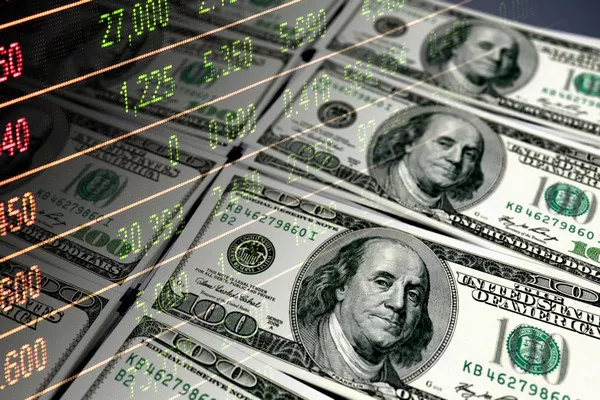In the vast world of currency, the humble dollar bill may seem like a common and unremarkable piece of paper. However, delve a little deeper, and you’ll discover a fascinating realm of rarity and uniqueness associated with certain dollar bills. This article aims to explore the factors that contribute to the rarity of a dollar bill, shedding light on the hidden stories and characteristics that make some bills stand out from the rest.
Historical Perspective
To understand the rarity of a dollar bill, one must first grasp the historical context that surrounds the production and circulation of currency. The United States has a rich history of currency evolution, with each era marked by distinct designs, security features, and production techniques. Some dollar bills from specific time periods have become scarce due to factors such as limited production numbers, recalls, or discontinuation of certain denominations.
One notable example is the 1890 Grand Watermelon $1, famous for its unique design featuring watermelon-like zeros on the reverse side. Only a limited number of these bills were printed, making them highly sought after by collectors today. Understanding the historical significance of certain bills can reveal why they are rare and contribute to their value.
Serial Numbers and Printing Errors
One of the key factors influencing the rarity of a dollar bill is the combination of its serial numbers and any printing errors that may have occurred during production. Collectors often seek bills with low or unique serial numbers, as these can add significant value to the currency.
For instance, bills with serial numbers 00000001 or those with repeating numbers (e.g., 33333333) are considered rare and desirable among collectors. Similarly, printing errors such as misalignments, mismatched serial numbers, or inverted printing can make a dollar bill stand out from the ordinary, increasing its rarity and appeal.
Star Notes
Star notes are a particular type of currency that contributes significantly to the rarity of certain dollar bills. These notes are replacement bills issued by the Bureau of Engraving and Printing to replace damaged or defective currency during production. Star notes can be identified by a star symbol followed by a serial number, distinguishing them from regular bills.
The scarcity of star notes arises from their limited production and the circumstances that lead to their issuance. Collectors often avidly pursue star notes, and certain series or denominations can be exceptionally rare, further enhancing their value in the numismatic community.
Signature Combinations
Changes in leadership within the Department of the Treasury or the Bureau of Engraving and Printing can lead to shifts in the design and production of currency, influencing the rarity of specific dollar bills. The combination of Treasury Secretary and Treasurer signatures on a bill can indicate its time of issue and potential rarity.
For instance, a dollar bill featuring a unique combination of signatures, especially if one or both officials served for a short period, can become rare over time. Collectors often seek bills with signature combinations that mark significant historical moments or transitions, adding a layer of intrigue to their collection.
Condition and Preservation
The condition of a dollar bill plays a crucial role in determining its rarity and value. Bills that are well-preserved, free from creases, tears, or discoloration, are highly sought after by collectors. Grading systems, such as those employed by professional grading services, categorize bills based on their condition, with higher grades indicating better preservation.
Rarely circulated or uncirculated bills, especially those from older series, can become increasingly scarce due to natural wear and tear over time. Collectors often place great importance on the condition of a dollar bill, and pristine examples can command premium prices in the numismatic market.
See Also: Why Is American Dollar So Strong?
Conclusion
In conclusion, the rarity of a dollar bill is a multifaceted phenomenon influenced by historical, numerical, and design-related factors. Understanding the stories behind certain bills, whether due to unique serial numbers, printing errors, star notes, signature combinations, or exceptional preservation, adds depth and significance to their value in the world of currency collecting.
As collectors and enthusiasts continue to uncover the hidden stories behind rare dollar bills, these tangible pieces of history will undoubtedly remain cherished artifacts, transcending their face value and becoming a testament to the intricate tapestry of the United States’ monetary legacy.


